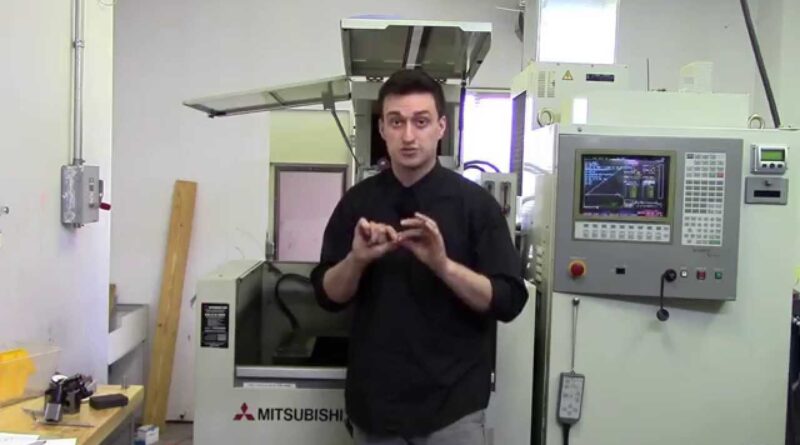Learning by Doing
Gabe Lipscomb didn’t plan a career in education. He once told his high school geometry teacher that the class was stupid and that he would never use any of what he learned there. “Then I went and became a machinist, where I needed those math skills each and every day,” he said, laughing. “Now I tell my students to be careful what they say to people; it might just come back to bite you.” Learning by Doing.
Lipscomb joined the manufacturing industry a few years after graduation and worked there for several decades, producing parts and tooling for some of Kentucky’s many aerospace and automotive businesses and their Tier suppliers, including Toyota, Ford, Dana, Lockheed Martin, General Electric, and others. Today, he’s a vocational-technical instructor – and all of those manufacturers welcome the opportunity to hire one of Lipscomb’s proteges.
Lipscomb is an assistant professor and program coordinator of Computerized Manufacturing and Machining at Gateway Community and Technical College (GCTC) in Florence, Ken. It’s a position he’s held for the past five years. Asked which he prefers more—making parts or teaching others how to do so—his answer was unambiguous.
“I especially like it when I’ve been working with a young person on a new skill or a problem-solving activity, and that switch in their head finally clicks,” he said. “You can see it happening and know they’ve just learned something they’ll use for years. It’s a great feeling.”
Cutting in the Commonwealth
Given the shortage of skilled labor these days, his instruction is also a great service to his students and their future employers. Lipscomb explained that GCTC is one of 16 community colleges in Kentucky, all of them providing hands-on and online instruction in subjects ranging from philosophy and political science to nursing, computer science, and Lipscomb’s bailiwick, CNC machining.
At these schools, students can attend an accelerated program to pick up a specific skill – such as welding or automation; or commit to a longer, two-year program – like the one that Lipscomb offers. There are also apprenticeship opportunities with local employers. And for those high-schoolers wondering why they’re wasting time learning trigonometry, GCTC and its affiliate community colleges offer a dual credit program where students can split time between traditional learning and a more career-oriented training experience.
“We get a lot of 10th and 11th graders coming through here, and a lot of them are like I was — not especially in love with school. So this gives them a chance to explore alternatives and prepare for the future,” Lipscomb explained.
“We also kicked off a program recently called the Apprenticeship Academy. It’s designed for people who don’t yet know what they want to do, career-wise, and it allows them to take a full semester of basic, hands-on classes in machining, welding, electrical maintenance, and so on, after which they’re encouraged to declare a major and move into one of those specialty areas.”
Eroding in the Bluegrass State
Thanks to Lipscomb’s efforts during the early days of his teaching career, one of those specialties might now include wire electrical discharge machining. “It was during my first week here that I went to my boss and told him I needed a wire EDM,” he recalled. “His response was a blank stare while I explained the technology, what it can do, and why it’s important.
“Looking back, it might have been a bit audacious asking for new equipment right after they hired me, but it worked.”
Not right away. Educational funding is a slow process, and three years passed before GCTC’s shiny new WSi-200 wire EDM arrived, from Kent USA. Since then, Lipscomb has been using the submersible, auto-threading, four-axis linear guideway machine to teach students how they can use a brass wire roughly twice the diameter of a human hair to cut any electrically conductive material, regardless of its hardness.
“We don’t have a dedicated toolmaking program. This lays the foundation for one,” said Lipscomb.
“But even beyond that, wire EDM is widely used in the aerospace and medical industries to cut complex geometries in high-value parts. Having even a basic understanding of this key machining technology will help open doors for many of our graduates.”
The Wonder of Wire
The new Kent USA machine has been a big hit with Lipscomb’s students. He noted their amazement each time shows how a narrow wire can cut through a thick hunk of steel. They’re similarly shocked once they start actually using the EDM and see what they can do with it.
“Learning to use the WSi-200 was very easy, and has since proven just as easy to set up,” he says. “Kent’s service technician was quite knowledgeable. He came in, installed the machine, answered our questions, and walked us through the onboard software. Everything was top-notch when he left and there’ve been no issues since.”
“I’d really like to get a sinker EDM in here,” he said. “Between that and the wire, we’re off to a great start on a tool-and-die program. There are a lot of shops within an hour’s drive from here that make tooling, and as I said, wire EDM is becoming very common in job shops due to its ability to cut challenging shapes unattended. It’s a necessary component of any advanced manufacturing career.”
Kip Hanson, is the proprietor of KAHMCO LLC, has 40 years of experience in manufacturing, machine tools, and ERP systems.
https://www.americanmachinist.com/machining-cutting/media-gallery/21270811/learning-by-doing-with-wire-edm-kent-usa

